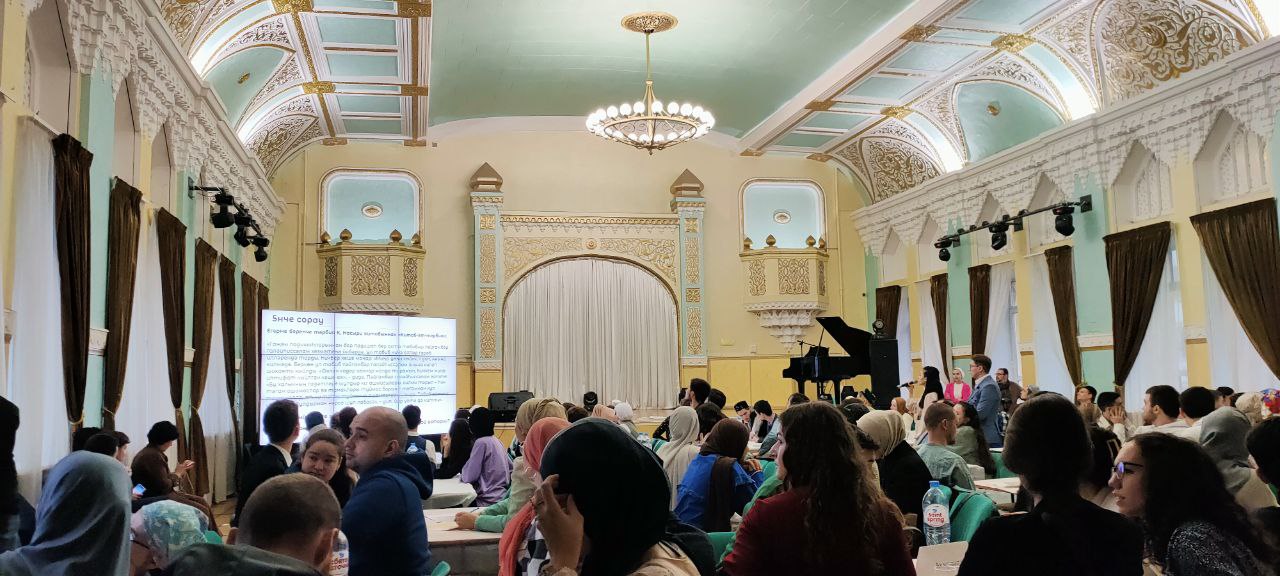News
Tatar dragon struggles to resist Russia’s uniformization
Despite measures such as stripping Tatarstan's leader of title of “president,” Federation’s second-largest people have preserved their cultural heritage better than other groups
Despite this position of relative advantage vis-à-vis other peoples of Russia, who see their language losing ground, Moscow wants to shore up potential demands, especially in the midst of an offensive in Ukraine, so as not to have internal fronts at a time when it needs unity. Therefore, the name change of the head of Tatarstan has been one of the most symbolic gestures. In 2023, the highest representative of this republic, Rustam Minnikhanov, has lost the title of president to receive that of governor instead, as the Russian administration understands that Russia's only president is Vladimir Putin. The title is Rais in Tatar.
Although in the 1990s most of the leaders of the republics —the Federation's subdivisions with a higher level of autonomy and a "titular" people— were presidents, in 2023 Minnikhanov was the last to retain that honour. Researcher Kamil Galeev explains in War on the Rocks that the current phase of the Russification process began in 2017, as evidenced by a phrase of the Russian president himself: "It is unacceptable to force a man to learn a language that is not his own", referring to the Federation's own languages other than Russian.
National symbols
The Tatar dragon, one of Tatarstan’s main symbols, is proudly displayed in many places in the capital, Kazan, which despite being under Russian control for nearly 500 years, retains some of its own style behind Soviet buildings. Roots are significant, and seeing the Tatar language on the streets is more common in Tatarstan than in other territories of the Federation. Outside the republic, a sense of Tatar community exists too, Moscow being one of the most relevant places for it.
During Ramadan, one of Islam’s biggest celebrations, at least a hundred Tatars gather to share breakfast at the end of the day in Moscow's Tatar Centre. “Many of us are secular or almost secular; Islam is more about identity than anything else,” explains Eldar, one of the Tatars attending. During the Soviet era, secularism was encouraged, a sentiment that persists despite the religious freedom that exists in Russia today.
 Iftar celebration at Moscow's Tatar Centre. / Photo: Àlex Bustos.
Iftar celebration at Moscow's Tatar Centre. / Photo: Àlex Bustos.For this reason, many Tatars consume alcohol and pork, but still consider themselves Muslims. Women often dress like ethnic Russians, without covering their hair. Iftar, when praying, is an exception: women, including young girls, cover their heads for a while. “No, we don’t normally cover our heads, only when praying,” explains one of them, Alia. Beforehand, to promote the language and culture, the Centre has organised a quiz in Tatar in which they ask about the life of Ğabdulla Tuqay, one of the leading figures in Tatar literature. This is just one of the organisations in the heart of Russia. Another, more informal one, brings together Tatars for Iftar —but also at other feasts— for dinners, karaoke, or board games. The aim is for the Tatars to be in contact with other members of the community, which is difficult in a crowded city like Moscow. In addition, they want to maintain their roots. In Russia, anything that could be interpreted as “separatism” is persecuted: therefore, cultural associations tend to avoid taking a political stance and therefore maintain a similar activity to before the conflict between Russia and Ukraine.
Strong economy and Turkish brotherhood
“Our language is stronger than Kalmyk, for example, because we have a big capital,” says Dina, one of the members of this community. Most of the republics with a “titular” people are either low-income or ethnic Russians are in the majority. However, Tatars are majority in Tatarstan and have significant oil reserves. Kazan has more than 1.2 million inhabitants and is Russia's unofficial third capital. Investment in education —which allows it to retain its young people, but also to attract youths from other regions and countries— and in jobs has prevented Tatarstan from suffering from one of the problems faced by other republics in the Federation, namely brain drain. Despite being Russia’s second language, Russification has also taken its toll on Tatar: whereas in 2010 the census recorded around 4.2 million people speaking Tatar, by 2023 there were only around 3.2 million, a number that, despite the decline, allows it to remain Russia’s second language.
Tatars share the Turkic brotherhood with other peoples in Russia such as the Bashkirs and Chuvash, but also abroad, such as the Kazakhs, Turks, and Azeris. This has helped Tatar retain a certain status as a language useful for business and for building cultural bridges with other peoples. This link has also been exploited in other areas, such as Turkvision, a song contest involving both states (Turkey, Azerbaijan and Kyrgyzstan) and substate units, such as Altai, Tyumen, and Sakha (in Russia) and Gagauzia (in Moldova).
